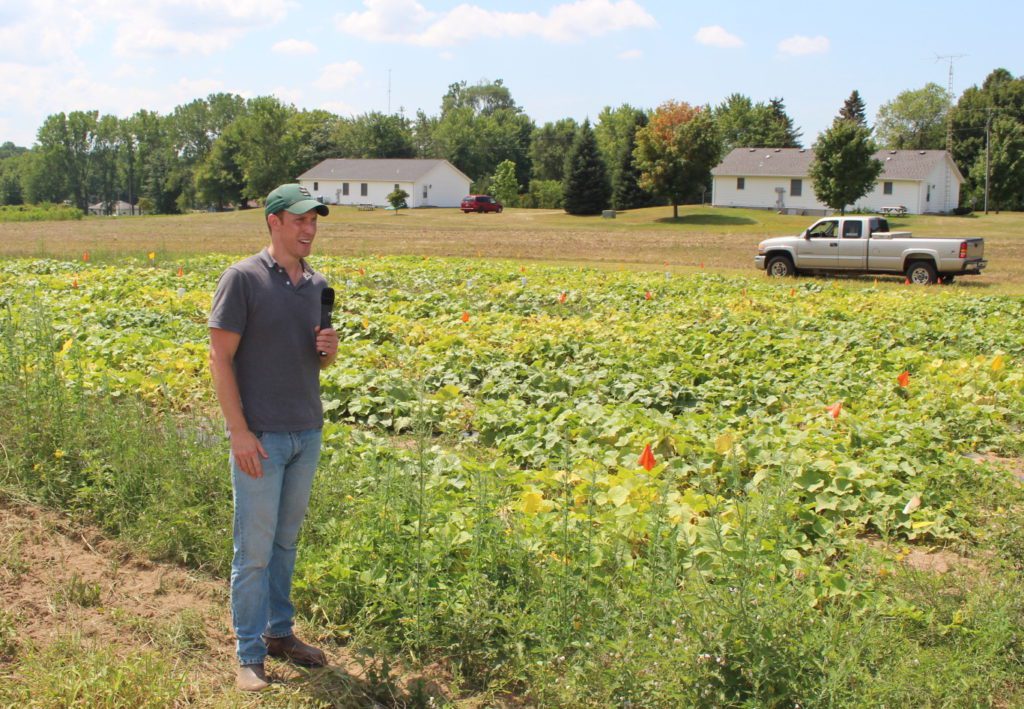Aug 16, 2017Trials, research exhibited at SW Michigan Extension tour
The Michigan State University (MSU) Southwest Michigan Research and Extension Center (SWMREC) on Tuesday, Aug. 15, offered tours of projects underway at its farm near Benton Harbor.
About 40 individuals attended the tours which included presentations on projects affecting a wide variety of crops from cucumbers to hops to blueberries and peaches.
MSU lab manager Kristin Poley discussed trials for a variety of alternative treatments for managing nematodes in the soil. One of the treatments being evaluated is Sun Hemp, a tropical legume that will grow 3-6 feet before being cut down and worked back into the soil. Other treatments included a high-rate of chicken manure, and soil “solar-ization” – using a spread of clear plastic to heat the ground, killing off nematodes. Poley added that a downside to this last treatment was that helpful bacteria and microorganisms would also be killed off. Cucumbers will be planted on the trial grounds to measure their effect.
MSU Assistant Professor of Horticulture Zachary Hayden spoke about testing different organic sources of nitrogen on a cucumber plot. Some of the materials tested included dried blood meal and soybean meal, he said.
Professor Mary K. Hausbeck discussed prevention and control of downy mildew and related plant diseases. “Once they get a leg up on you, they’re really hard to reign in,” she said. Some fungicides that were once effective against the disease are no longer working well, she said. Graduate Student Douglas S. Higgins spoke about his research into preventing downy mildew on hops.
Entomology Professor Rufus Isaacs spoke about research to find plants to help sustain pollinators like bees. So far, the group has found 25-27 species that are attractive to pollinators.
MSU Extension Educator Ronald Goldy his work on various trials of vegetable varieties for tomatoes, russet potatoes, Harris Moran Zucchini, pickle cucumbers, slicing cucumbers and russet potatoes. Currently, the tomato patch is shielded from crows by streamers, but Goldy said he used to use dead crows to keep the others away. Each dead crow takes keeps about 200 feet clear.
“It’s an old farmers’ trick, but it works,” he said.
Photo above: MSU Assistant Professor of Horticulture Zachary Hayden speaks at the Southwest Michigan Research and Extension Center.
— Vegetable Growers News Assistant Editor, Stephen Kloosterman

















